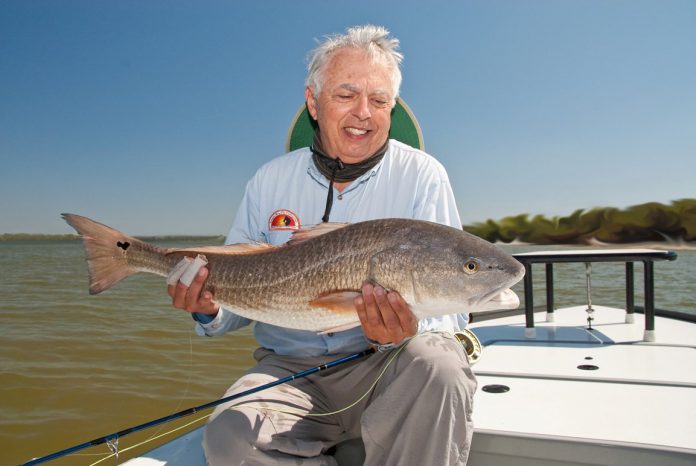The Tampa Bay Times
“I’m going to use my spinning rod today, it’s too windy to fly fish.” This is a statement I frequently hear this time of the year because of windy conditions. The clear water flats are free of floating grass and make sight fishing for trout, reds, sheepshead, and occasionally snook a perfect venue. Wind can be a help or hindrance. Perfect calm makes it easier to see fish, but they are very spooky, making long casts necessary. A little ripple on the surface from the wind hinders our ability to see fish, but they are more relaxed, meaning we can get closer. A nine-foot fly rod, the ideal length for most of our fishing should keep the fly, and hook, at least that far away from you. If the wind is blowing into your non-casting side, there is usually only a problem with casting accuracy. Wind into your casting side can be a problem easily corrected by casting horizontally and close to the water, giving the wind little chance to affect it. A very tight loop in your line created by having the rod tip travel in a straight line path will be almost unaffected by the wind. A large loop will be a disaster especially if thrown high. A strong wind into your casting side can be problematic, easily corrected by casting on your line-hand side using either a cast with your arm across your body, or tilting your body away from the wind and, “brushing your hair,” with your casting hand as you have the rod tip travel on your leeward side. Learning to cast with both hands is an ideal solution.Fly fisherman and casting instructor Pat Damico charters Fly Guy in lower Tampa Bay and can be reached at captpatdamico.com and 727-504-8649.
- Capiains Corner. Damico - December 26, 2023
- Pat Damico - December 21, 2023
- CaptainsCorner: Pat Damico - November 27, 2023











